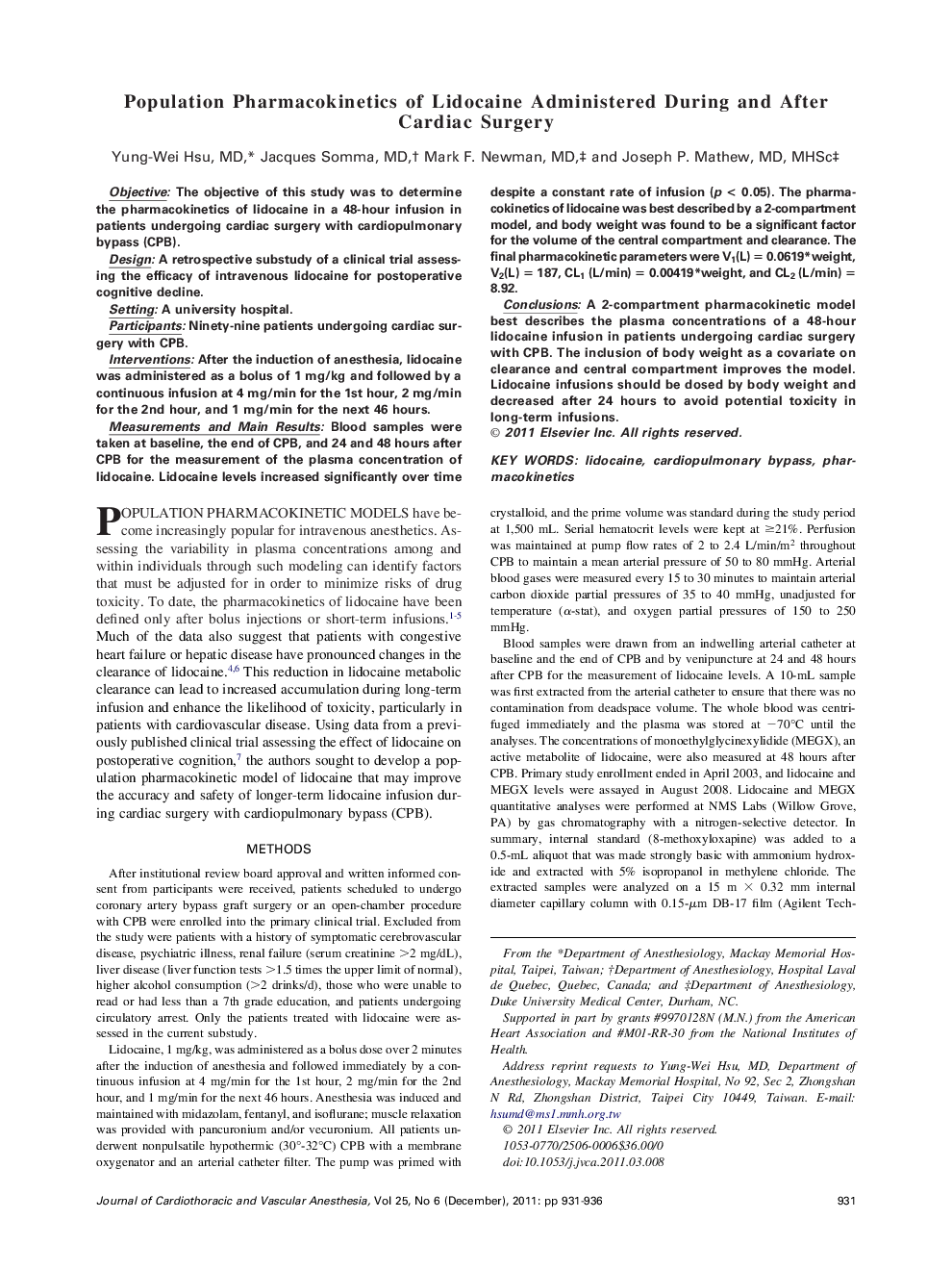| Article ID | Journal | Published Year | Pages | File Type |
|---|---|---|---|---|
| 2760848 | Journal of Cardiothoracic and Vascular Anesthesia | 2011 | 6 Pages |
ObjectiveThe objective of this study was to determine the pharmacokinetics of lidocaine in a 48-hour infusion in patients undergoing cardiac surgery with cardiopulmonary bypass (CPB).DesignA retrospective substudy of a clinical trial assessing the efficacy of intravenous lidocaine for postoperative cognitive decline.SettingA university hospital.ParticipantsNinety-nine patients undergoing cardiac surgery with CPB.InterventionsAfter the induction of anesthesia, lidocaine was administered as a bolus of 1 mg/kg and followed by a continuous infusion at 4 mg/min for the 1st hour, 2 mg/min for the 2nd hour, and 1 mg/min for the next 46 hours.Measurements and Main ResultsBlood samples were taken at baseline, the end of CPB, and 24 and 48 hours after CPB for the measurement of the plasma concentration of lidocaine. Lidocaine levels increased significantly over time despite a constant rate of infusion (p < 0.05). The pharmacokinetics of lidocaine was best described by a 2-compartment model, and body weight was found to be a significant factor for the volume of the central compartment and clearance. The final pharmacokinetic parameters were V1(L) = 0.0619*weight, V2(L) = 187, CL1 (L/min) = 0.00419*weight, and CL2 (L/min) = 8.92.ConclusionsA 2-compartment pharmacokinetic model best describes the plasma concentrations of a 48-hour lidocaine infusion in patients undergoing cardiac surgery with CPB. The inclusion of body weight as a covariate on clearance and central compartment improves the model. Lidocaine infusions should be dosed by body weight and decreased after 24 hours to avoid potential toxicity in long-term infusions.
